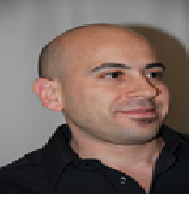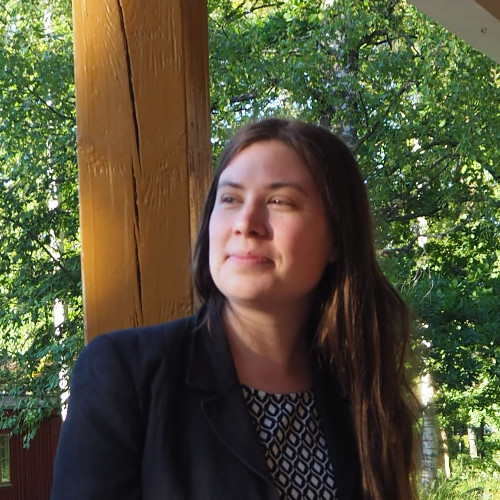Scientific Program
Keynote Session:
Title: Preparation and characterization of pectin/CMC/MCC composite as second degree burn wound dressing on Wistar rat (Rattus novergicus) model
Biography:
Muhammad Alfath is undergraduate student of Department of Chemistry, Institut Teknologi Bandung, Indonesia. He works for his project in bioorganic division under supervision of Dr. Ciptati, MS, M.Sc and Dr. Rachmawati.
Abstract:
Porous scaffolds made of biopolymers are the main topic in tissue engineering for living organism in this recent time. Biopolymers were chosen because their cheap price, widely available in nature, non-toxic, and non-allergic. A novel material was developed from composite of pectin, carboxymethyl cellulose (CMC) and microcrystalline cellulose (MCC) with lyophilization technique. The composites that have been made are then determined for their physical properties and ability in healing second-degree burns in the Wistar rat model. Composite optimization results consisting of pectin 0.3% (w/v), CMC 0.12% (w/v) and MCC 0.03% (w/v) indicates the ideal pore size (d = 30-300 μm) for the growth of fibroblasts in the process of wound closure. Addition of MCC to composites can reduce the rate of in vitro degradation of composites in a phosphate buffer system of pH 7.4 and temperature of 37 °C. The addition of MCC to composites is also able to significantly increase the thermal resistance of composites compared to composites without MCC. In vivo studies conducted on Wistar rats showed significantly different results (p<0.05) between the treated group and the negative control group. On the 21st day, the remaining wound size in the treated group were 16.38 ± 10.04% and the remaining wound size negative control group was 43.59 ± 19.10%. The results of this study indicate that the pectin/CMC/MCC composite material has the potential to be used as a second-degree burn wound dressing.
Title: Interferon Regulatory Factor 4 in Cancer Gene Regulation
Biography:
N C Tolga Emre received his doctoral degree from the University of Pennsylvania in 2005, and did postdoctoral work at US National Institutes of Health. He is a faculty at BoÄŸaziçi University’s Department of Molecular Biology & Genetics in Istanbul/Turkey since 2011, currently as an associate professor, and group leader at the Laboratory of Genome Regulation. Dr. Emre’s research focuses on gene regulatory mechanisms, especially epigenetic chromatin modifications and transcription factors in cancers. His research has been funded by grants from European Commission, European Molecular Biology Organisation, Scientific and Technological Research Council of Turkey and BoÄŸaziçi University. Dr. Emre is a recipient of 2013 Young Scientist award from Science Academy Foundation of Turkey.
Abstract:
Abnormal activities of epigenetic modifiers and transcription factors play critical roles in shaping the aberrant gene expression programs of cancer cells. Identification of the target genes and signaling pathways controlled by such factors are an important step in designing targeted therapies against cancers. Interferon regulatory factor 4 (IRF4) is a transcriptional regulator with crucial roles in the development and functioning of immune cells, and implicated in malignant transformation (1). We have previously shown a critical role for IRF4 in a variety of B-cell cancer cells, and identified its mechanisms of action (2-4). These and related work point to IRF4 pathways as therapy targets in cancers. Several studies also implicate IRF4 function in non-immune cells, such as in melanocytes (5). For instance, a number of genome-wide genetic studies associated variation at the IRF4 gene with pigmentation phenotypes and skin cancers. However, despite the observed genetic links and generally high expression, the role of IRF4 in skin cancers remains under-studied and poorly understood. Therefore, we set out to identify the functions of IRF4 in skin cancer cells using genome-wide, cell and molecular biological approaches. We have taken a candidate approach to discover the upstream modulators of IRF4 expression in these cells. In parallel, we have performed localization (ChIP-seq) and transcriptomic (RNA-seq) assays in order to identify its genome-wide targets. These analyses, together with analyses of The Cancer Genome Atlas (TCGA) data, point to a role of IRF4 in epigenetic regulation of these cells, in addition to other cancer- and development-related pathways. Furthermore, our preliminary studies implicate IRF4 as a critical factor in skin cancer cell proliferation and survival. Taken together, our work on IRF4 provides mechanistic insight at the cellular and molecular level in cancers, and point to potential new therapy strategies.
Title: Unravelling the efficiency of berberine loaded Bovine Serum albumin nanoparticle for breast cancer therapy
Biography:
Dr. Sunita Patel currently working as an Assistant Professor at School of Life Sciences, Central University of Gujarat, India. Her main area of resarches are Biochemistry, biophysical chemistry, RNA-protein interactions, protein chemistry, spectroscopy: application to biology. She has participated in many international conferences, events and meetings.
Abstract:
Berberine is a naturally occurring plant-derived alkaloid, isolated from Berberis species. Berberine possess multiple pharmacological properties including anti-inflammatory, Anti-oxidant, Anti-diabetic, Antihypertensive, Antidepressant, Antidiarrheal, Antimicrobial, Neuroprotective, Hepatoprotective, Antitumor and Anticancer activity. Though these outcomes are very promising, its low water solubility and oral bioavailability restrict its clinical uses. Hence, in the present study we have reported the entrapment of Berberine (BBR) in Bovine Serum Albumin Nanoparticle (BSA NPs) and its cytocompatibility to Breast Cancer cell line (MDA-MB-231). BSA NPs and Berberine loaded BSA nanoparticles (BBR-BSA NPs) were successfully synthesized by desolvation method. The BSA NPs alone and BBR-BSA NPs were extensively characterized for the size, shape, surface charge, morphology, stability, drug content and in vitro drug release. Physiochemical characterization of prepared nanoparticles was done by using DLS, FESEM, FTIR, DSC and TGA. The size of synthesized nanoparticles were found to be within the suitable range for drug delivery, having positive charge analysed by zeta potential. The SEM images of nanoparticles implied that prepared nanoparticles are of spherical shape. The drug entrapment efficiency of prepared nanoparticles was found to be 85 % with a drug loading capacity of 7.78 %. The FTIR spectra confirms the synthesis of Berberine loaded nanoparticles. Time dependent stability study suggests that nanoparticles are quite stable in aqueous solution at pH 7.4. The MTT assay, Trypan blue assay and AO-EtBr staining proved that the prepared NPs are selectively toxic towards breast cancer cell lines and kill the cells more efficiently as compared to Berberine alone. The results of intracellular uptake studies suggest that BBR-BSA NPs could effectively improve the anticancer activity of BBR by delivering it to target site for potential therapeutic use. This work provides a novel therapeutic approach for inducing breast cancer cell death or inhibiting cell growth. All the above information suggests that BBR-BSA NPs may emerge as a novel paradigm for treatment of breast cancer.
Title: 3D cell printed corneal stromal equivalent for corneal tissue engineering
Biography:
Hyeonji Kim received B.S degree in mechanical engineering from POSTECH, South Korea, in 2013. She is currently pursuing the Ph.D. degree in department of mechanical engineering from POSTECH. Her research interest lies on the building the functional human tissues from stem cells via the 3D bioprinting technology and printable biomaterials.
Abstract:
The microenvironments of tissues or organs are complex architectures comprised of fibrous proteins including collagen. The spatial organization of collagen fibrils contribute tissue-specific mechanical properties to the fibrillar matrix and mediates cell attachment, proliferation, differentiation, and migration. In particular, the cornea is organized in a lattice pattern of collagen fibrils which play a significant role in its transparency. Recent studies suggested various engineering methods to control the collagen fibril architectures and replicate the transparent corneal structure using synthetic and natural biomaterials [1-2]. However, the application of fabricated corneal scaffolds was reported to result in insufficient corneal features including low transparency. In this paper, we introduce a transparent bioengineered corneal structure. The structure is fabricated by inducing shear stress to a corneal stroma-derived decellularized extracellular matrix bioink [3] based on 3D cell-printing technique. The printed structure recapitulates the native macrostructure of the cornea with aligned collagen fibrils which results in the construction of a highly matured and transparent cornea stroma analogue. The level of shear stress, controlled by the various size of the printing nozzle, manipulates the arrangement of the fibrillar structure. With proper parameter selection, the printed cornea exhibits high cellular alignment capability, indicating tissuespecific structural organization of collagen fibrils. In addition, this structural regulation enhances critical cellular events in the assembly of collagen over time. Interestingly, the collagen fibrils that remodelled along with the printing path create a lattice pattern similar to the structure of native human cornea after 4 weeks in vivo. Taken together, these results establish the possibilities and versatility of fabricating aligned collagen fibrils; this represents significant advances in corneal tissue engineering. In vivo (a-c) and in vitro (d-f) evaluation results of 3D cell-printed and non-printed corneal implants. Optical images from slit lamp examination, 2D cross-sectional OCT images (a, d), and second harmonic generation (SHG) microscopic images of non-specific collagen (b, e) with Distribution analysis of collagen fibrillar orientation (c, f). In 3D cell-printed group, higher transparency was exhibited compared to non-printed group and corneal stromal pattern by shear-induced collagen alignment was reconstructed similar to that in human cornea.
Title: Heterogeneity of sympatho-adrenal system reveals new possible origin of neural-crest derived tumors
Biography:
Ms. Pamela Klecki currently working as a full time research scholar at Karolinska Institute, Sweden. She has published more than 5 research papers in different journals and participated in many international conferences and events.
Abstract:
Adrenergic chromaffin cells of the adrenal medulla are generated through recruitment of nerveassociated neural crest-derived cells termed Schwann cell precursors (SCPs). The present study evaluates the effect of serotonin precursor (5-HTP) on survival and proliferation of neural crest derived progenitors into chromaffin cells on E13.5 explants derived from C57BL/6 wild type mice. We also investigate whether serotonin (5-HT) enhances neurite outgrowth and proliferation in non-differentiated rat pheochromocytoma cells (PC12), which originate from chromaffin cells. Here we report that treatment with serotonin precursors resulted in a significant decrease of proliferating tyrosine hydroxylase positive (TH+) cells in the adrenal gland (AG). In addition, we demonstrated that serotonin enhances neurite outgrowth in non-differentiated cells. The preliminary data indicate the potential of serotonin to function as a new molecular target for neural crest-derived tumors as pheochromocytoma.






